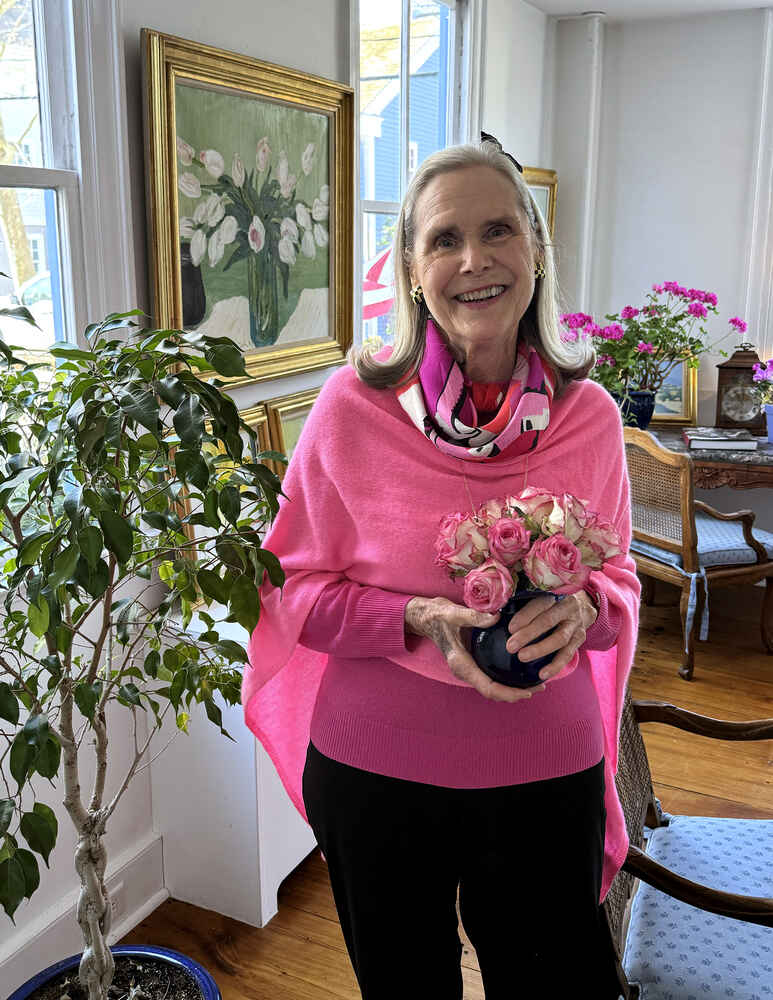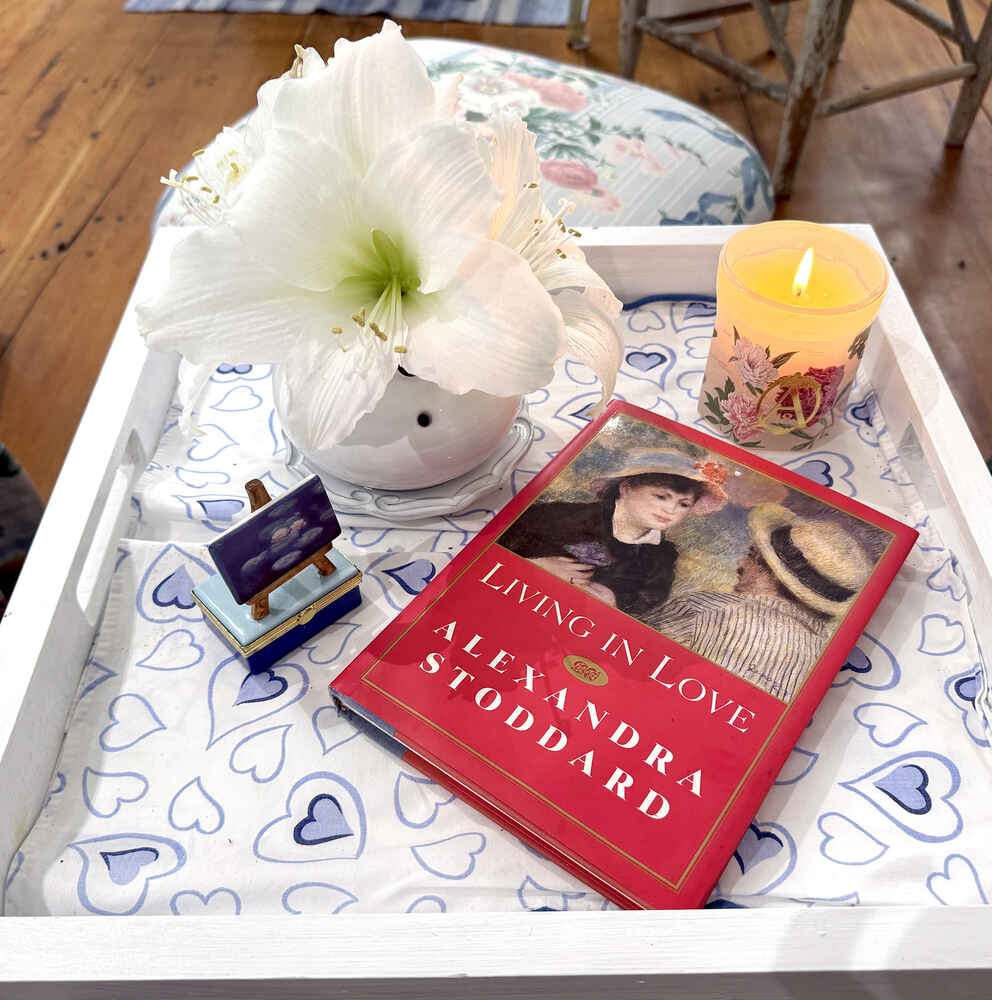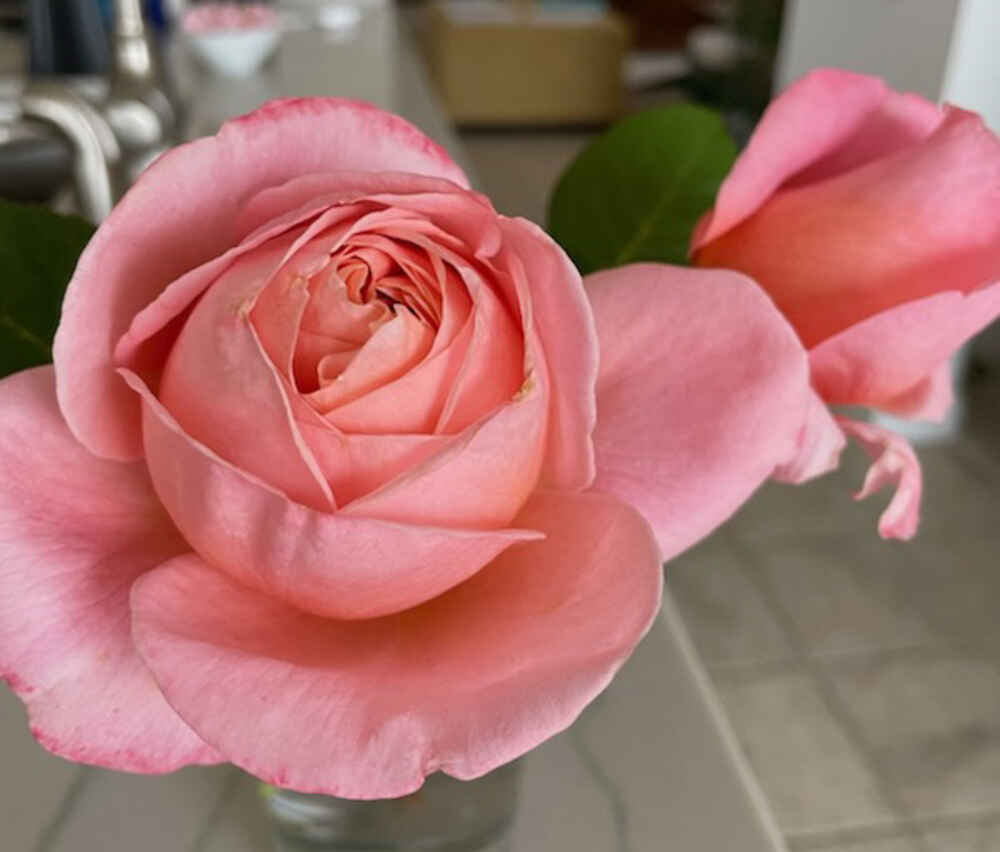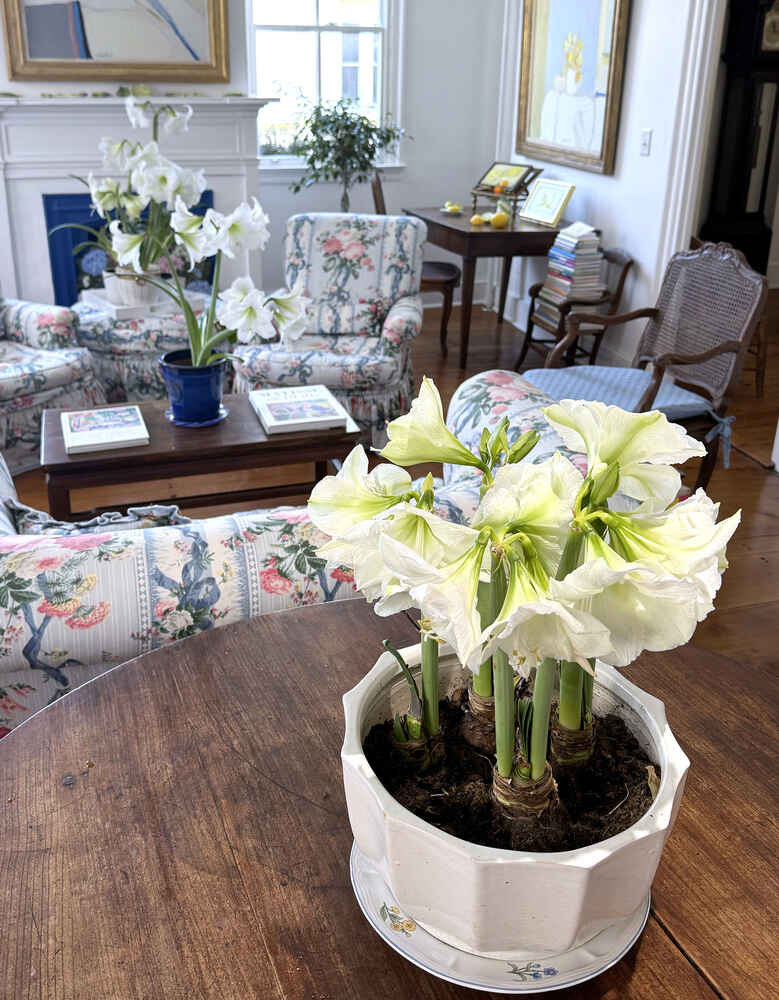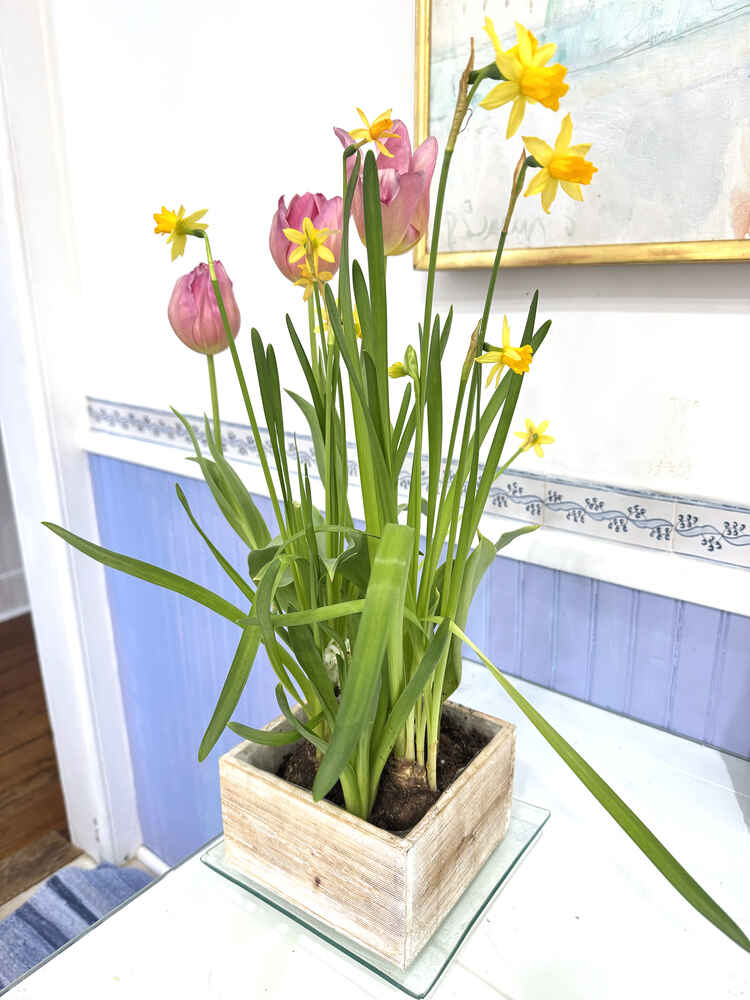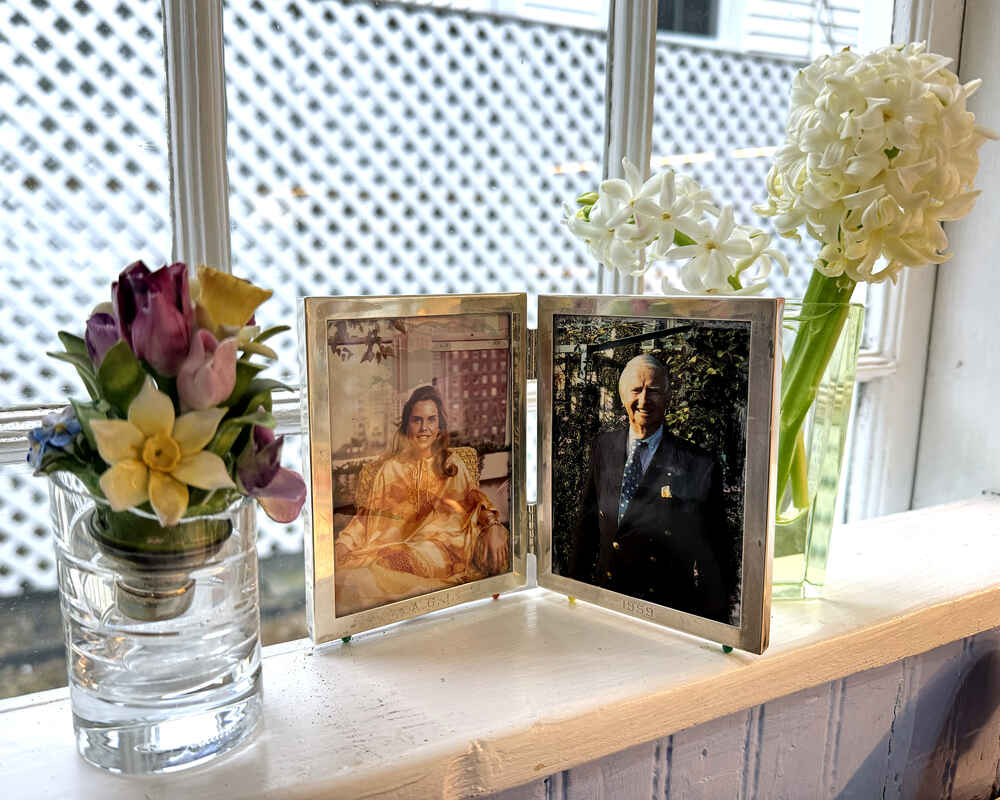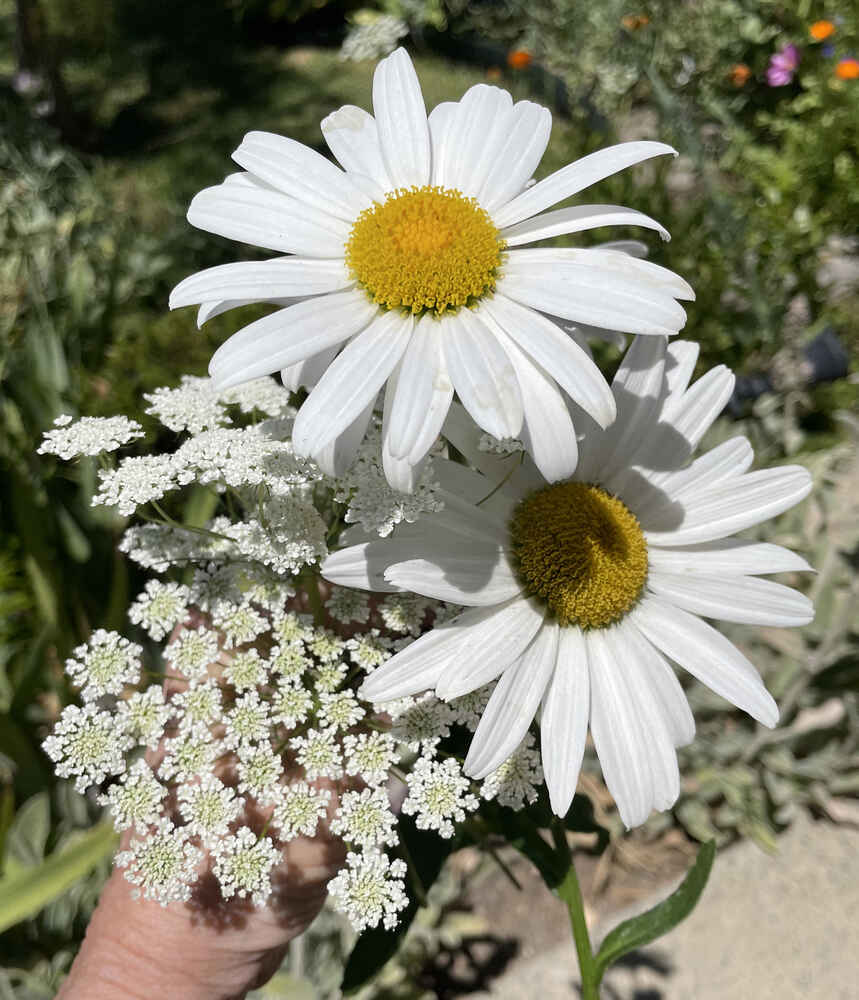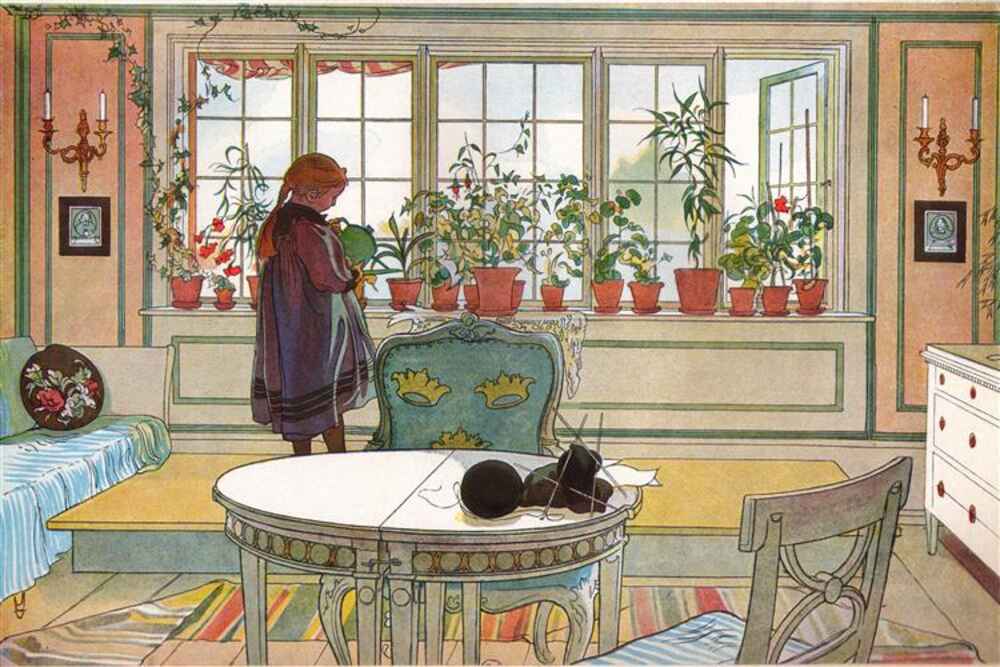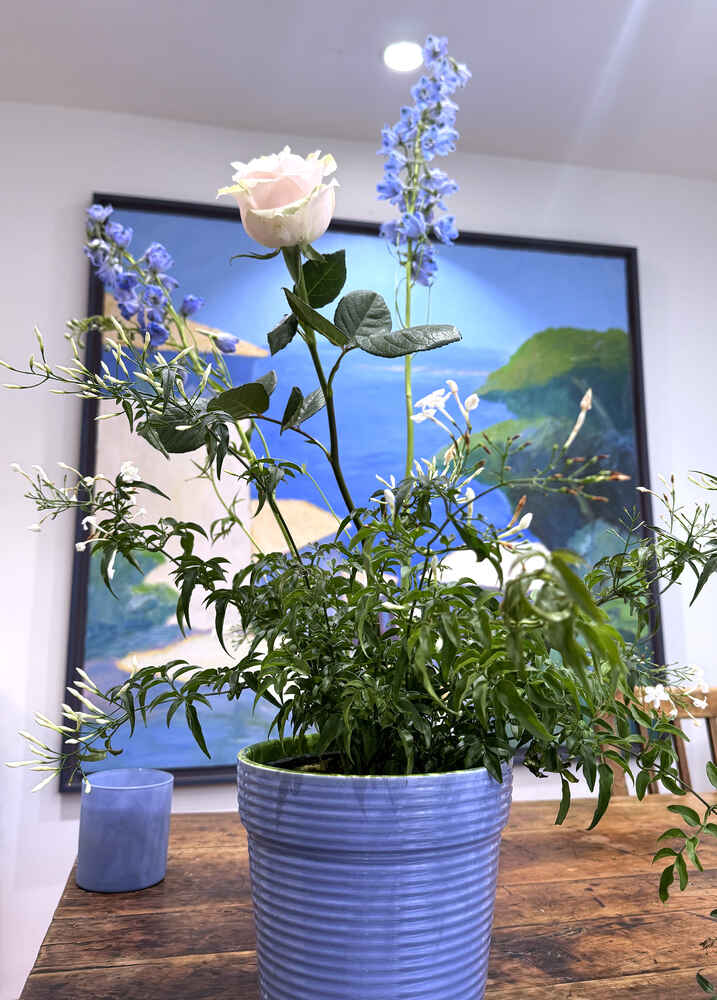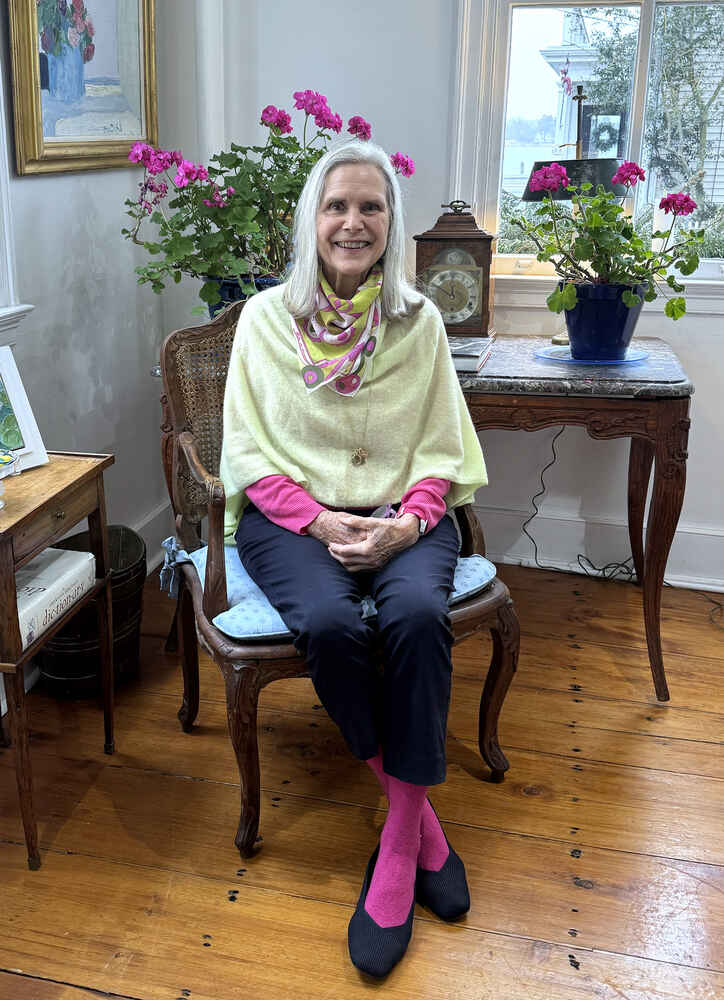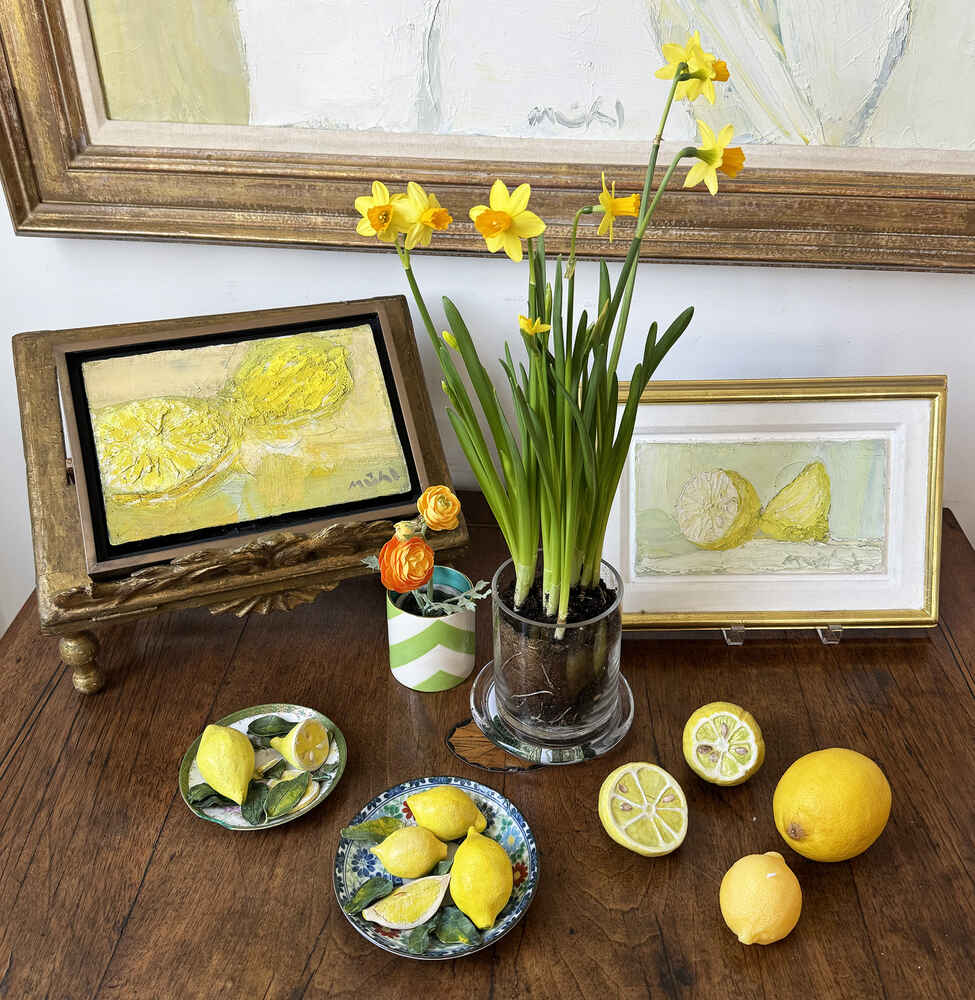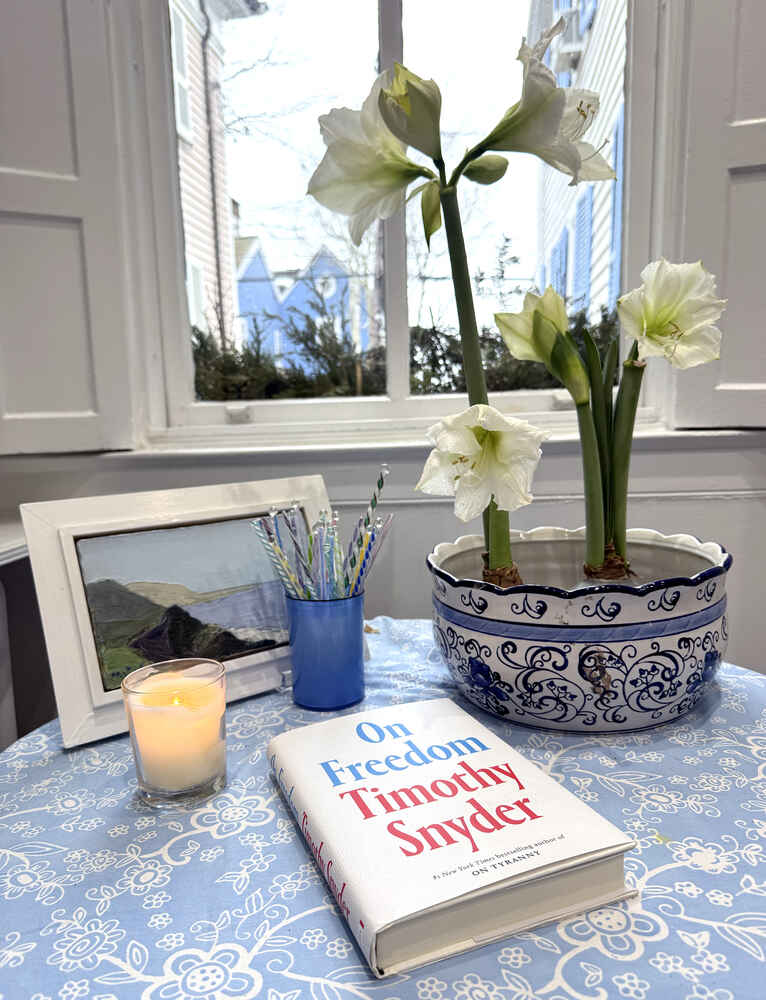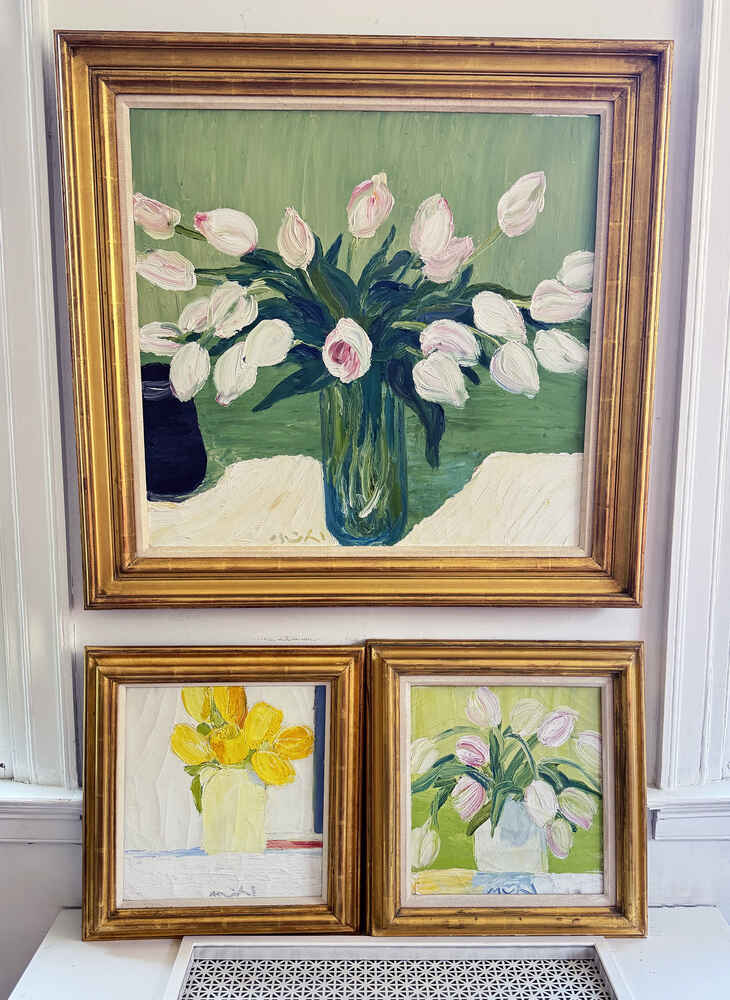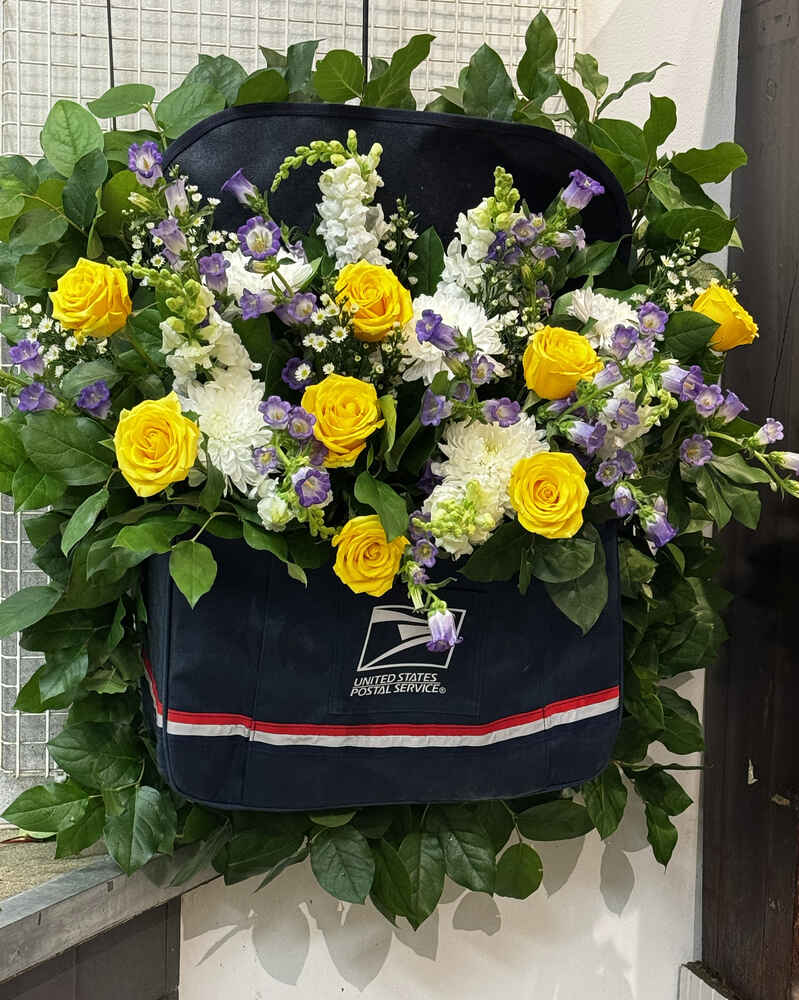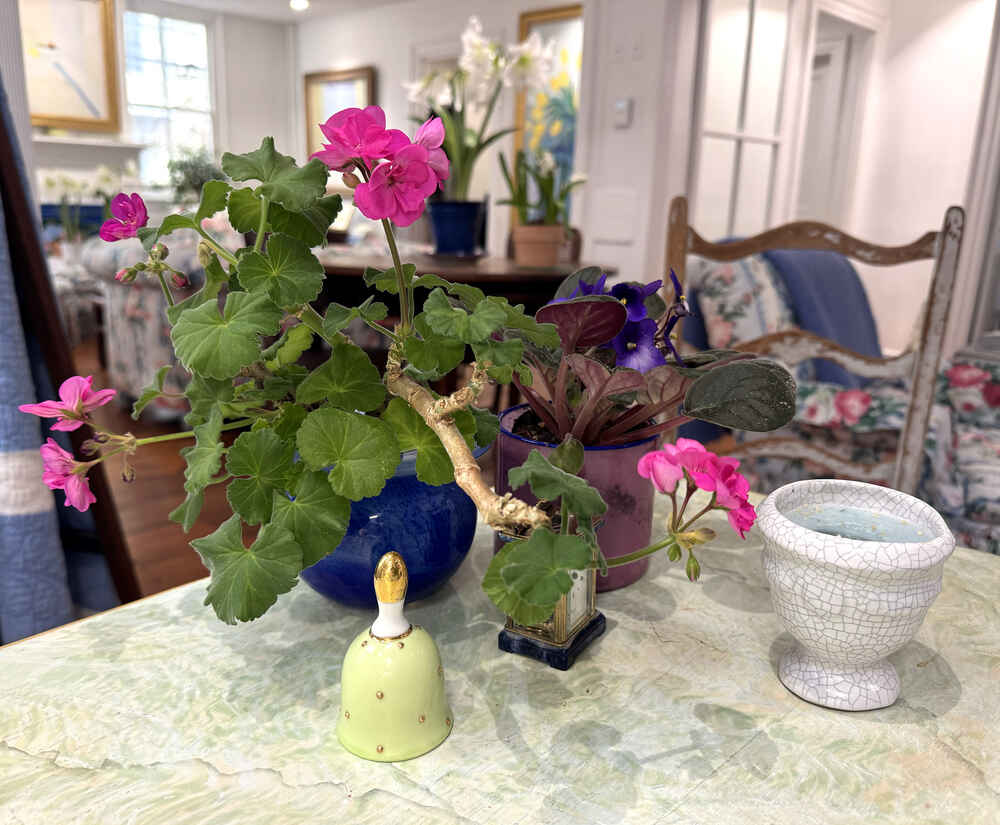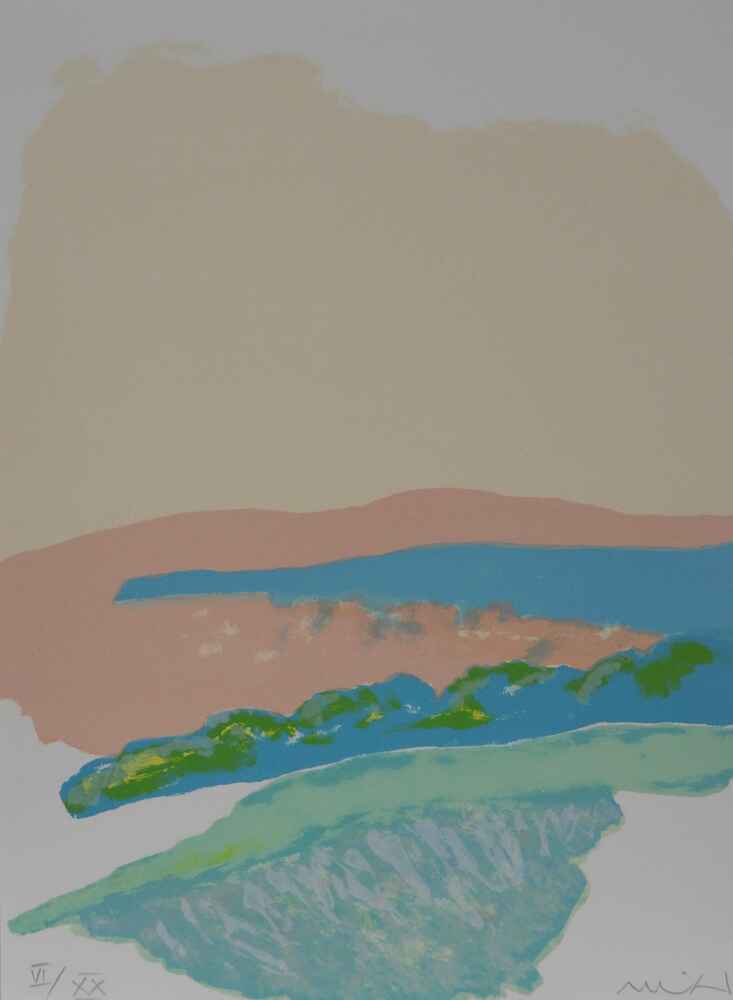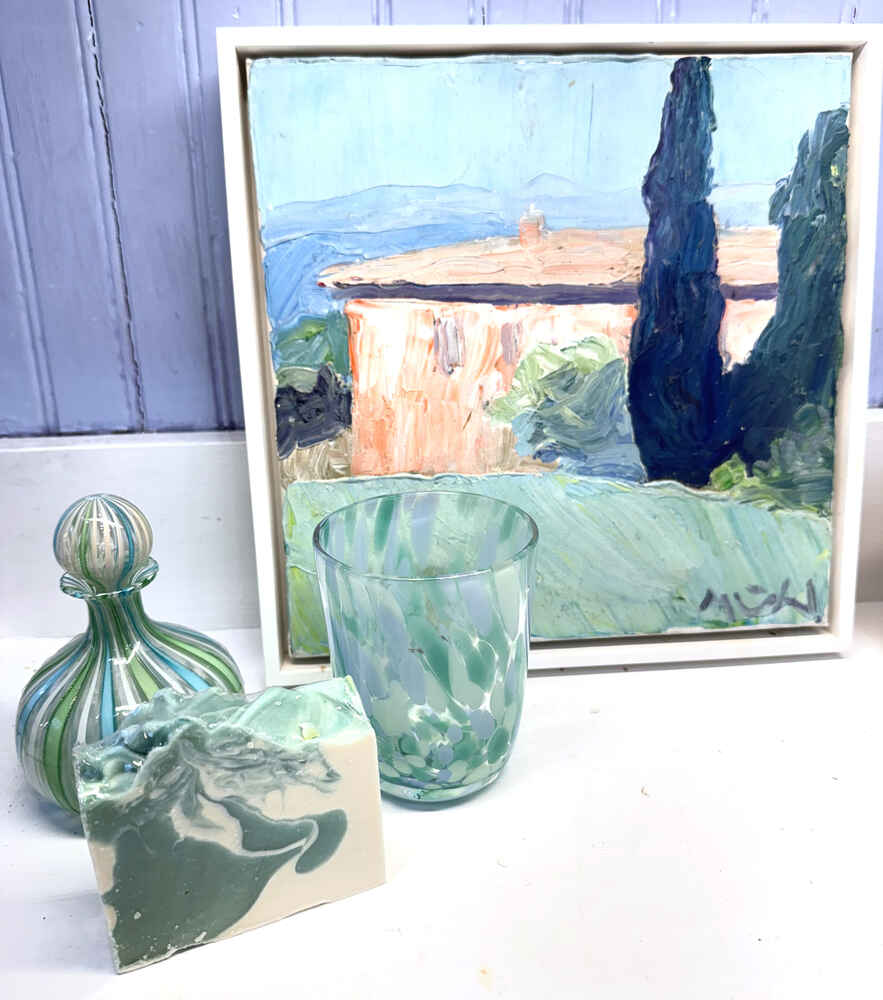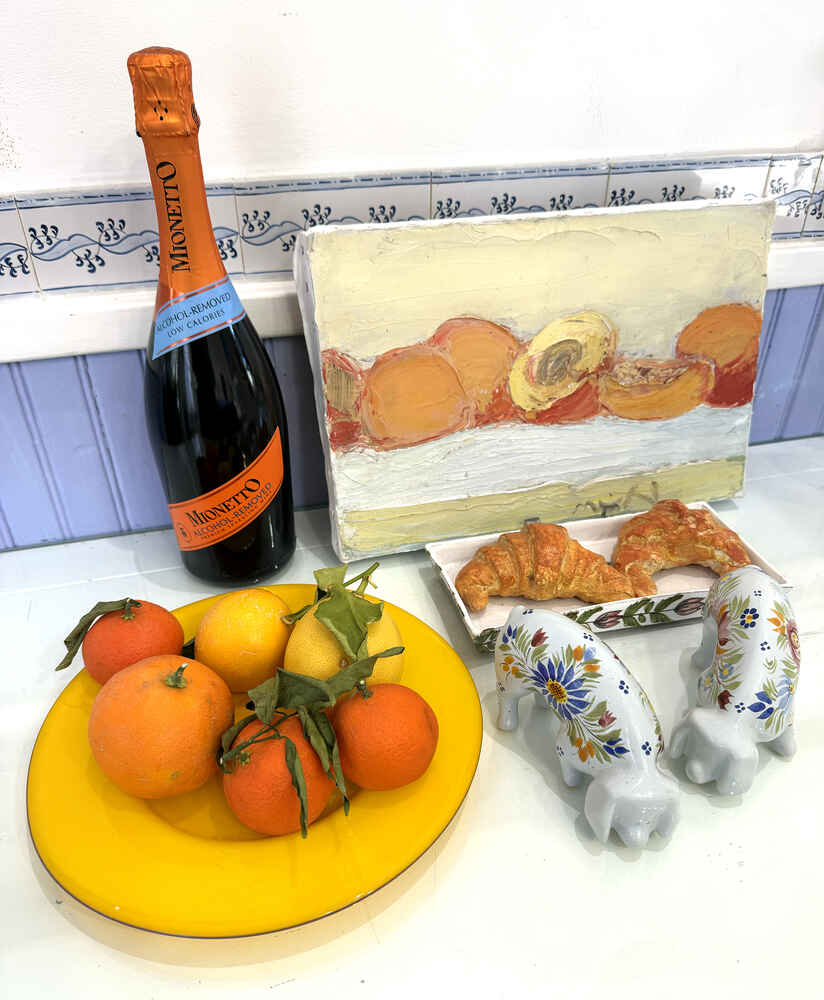AUTHOR | SPEAKER | PHILOSOPHER | DESIGNER
February 2025
Dear Friends,
I love you! February is the month of love. There are endless, eternal ways to love. It is our relationships with each other, our human connections, that bring us our lasting happiness.
His Holiness the Dalai Lama understands that we must have the capacity to love ourselves in order to build “a sense of caring toward others.” Self-care is self-love. In order to become a more excellent human being, the ancient philosophers believed we must be aware of our every thought and action. I love the romantic poet Robert Browning’s insight: “Where my heart lies, let my brain lie also.”
Paying close attention to the thoughts that flood our mind can help us become kinder and more loving to ourselves as well as to all the people with whom we interact. Throughout our lives, we continuously make choices that form patterns of attitude and judgment. It’s a good reminder that Socrates, one of the most brilliant, wise thinkers in history, stated at the end of his life: “I know nothing.”
We will continuously fall short of our desire to do our best, but we can always learn from falling short and from our mistakes; we will keep plugging away and eventually figure it out. This inner work, when practiced daily with rigor, is a continual process of self-discovery. It takes courage to follow our true heart and mind. Being aware can guide us on a path that will improve our character, keeping a check on our values, our moral code. The 19th century American physician and writer Oliver Wendell Holmes believed that “a moment’s insight is something worth a life’s experience.”
As I wrote in Living in Love, we take personal responsibility for the choices we freely make, to live up to our fullest possibilities and give birth to our higher frequencies and higher power. We learn, by loving what we’re doing, how we can do more things that make us happy. There is a reason for all the effort we put into learning how to love our life as it currently is. We are not becoming skilled at love in order to “fall in love” with someone else. We regularly do this inner work for the discovery, enrichment, knowledge and inspiration. Exemplary thinkers used their inborn talents and interests to become excellent in their field, passing on their knowledge and skills to us. When we are living in love, we are loving ourselves in relationship to the world. When we have the courage to express our true essence, this is the blessing we share with those we love. We are most fortunate when we study under authentic human beings who genuinely want to make a difference in the world. As the ancient Roman poet Ovid expressed, “Skill makes love unending.”
Let’s all live our best life to the hilt and find our own way to make the world better because we have lived, and loved.
Friends Who Are There for Us
It has been a month of tragedy and hardship for many. While writing this newsletter, I learned of the two planes that crashed into each other with no survivors, and my stomach hurts thinking of the families and friends who lost so many loved ones. Losses like these can feel senseless and random, and my heart goes out to everyone who was affected by this horrible disaster.
In addition, the fires in California have brought us to our knees. It’s unimaginable to comprehend the devastation’s consequences. Some people’s houses were reduced to a heap of debris. As their former safe haven, their homes, were destroyed, broken irreparably, their hearts were at their breaking point. When we’re faced with loss of life or our possessions, one realizes the greatest gift is true, loving friends.
In times of crisis, people become more altruistic. Intuitively they feel others’ pain because we have all experienced the pain of loss. This feeling of compassion and understanding for the sufferers’ need for help is inborn in our DNA. Altruism comes from the Latin alter — other. We are humbled to learn of other people’s disasters; by offering a helping hand, we feel our deep interconnectedness to all humanity.
At the grassroots level, friends, neighbors and communities work together to play their part in helping out. In tragic times, our immediate instinct is to be helpful. As the beloved writer Lewis Carroll understood, “One of the deep secrets of life is that all that is really worth doing is what we do for others.”
For all those who are affected by these disasters, my heart goes out to you. Whenever anyone suffers a catastrophe, they are also supported by grace. They are not alone, and in their darkest times, they will experience love in action from their community’s support, as well as from people who empathize, from all corners of the globe, and come in with their resources in order to help the sufferers.
We are part of a loving fellowship of caring people. I hear countless stories of friends helping friends when they are going through a crisis. Whenever we can do anything to keep a heart from breaking, the poet Emily Dickinson understood, we will not be living in vain.
I love His Holiness the Dalai Lama’s insight that if we want to be happy, be compassionate. “Even if you searched for eons to find the best method to achieve permanent happiness,” he wrote, “you would find that the only way is to generate love and compassion.” If you choose to make someone else happy, the way is to be compassionate. “Compassion is concern for others—sincere concern for others’ well-being,” he taught, “founded on awareness of our own experience. Since it makes us happy when others show us affection and offer us help, if we show others affection and readiness to help, they too will feel joy.”
We know the appropriate thing to do to help a friend or neighbor, because whenever we “do onto others” what we’d want them to “do unto us,” this is the answer to the secret to joy, as Lewis Carroll knew so profoundly.
This inner knowing is a comfort that informs our choices throughout our lives. Lending help is always the right thing, right now.
An Epic Love Story. 100 Years Well Lived
As you know, I’m a fan of Jimmy Carter. After his beloved wife of 77 years, Rosalynn, died in 2023, I felt certain that he would follow her within weeks. When he celebrated his 100th birthday, I remembered meeting him at the White House in a receiving line in 1977. When I said, “Mr. President, it is an honor to meet you,” President Carter smiled broadly: “I can assure you, the pleasure is all mine.”
When HGTV started their home-improvement shows for television, I was invited to host a show called Homes Across America. Jimmy Carter’s initiative, Habitat for Humanity, arranged for the hosts of the HGTV shows to build a house. To be a part of something so meaningful is a memory I will always cherish. I wore a hard hat, I had a hammer, and I was a part of a team who was able to literally build a house and meet the family who would call it their home.
The Washington National Cathedral gave President Carter a majestic, lofty funeral. Washington sure knows how to throw a grand service for our fallen presidents. There were five presidents who attended the funeral, paying tribute to an exemplary public servant who promised the American citizens that he would never lie to us.
Of all his amazing accomplishments, it was his grandson Jason (who is chairman of the Carter Center) whose words summarized a humble man from Plains, Georgia. Peter Baker reported in the New York Times that Jason spoke for the family, humanizing his grandfather as a “regular guy” that he called Pawpaw.
“Essentially, he eradicated a disease with love and respect,” Jason said. “He waged peace with love and respect. He led this nation with love and respect. To me, this life was a love story from the moment that he woke up until he laid his head.”
President Gerald R. Ford’s son Steven and former Vice President Walter F. Mondale’s son Ted read the eulogies written before their fathers’ deaths. (Baker wrote that “Mr. Carter defeated Mr. Ford in the 1976 election but they later became friends.”)
“As for myself, Jimmy,” read Ford’s eulogy to Carter, “I’m looking forward to our reunion. We have much to catch up on. Thank you, Mr. President. Welcome home, old friend.”
President Biden said that Carter’s “most enduring attribute was character, character, character.”
I watched the 2½-hour funeral with rapt attention. I’ve attended many services at this towering cathedral, experiencing awe at the light that created dancing, colorful designs on the marble floor. I always pay a visit to Honest Abe’s statue when I’m there. The quality of the sermons and the beauty of the organ with a full choir echo memories of personal experiences in this majestic place of worship.
The most recent state funerals held at the cathedral were for President George H.W. Bush and John McCain. They were moving in their dignity, rituals and tributes to public servants.
I’m grateful that I have so many presidents I admire and consider heroes. Jimmy Carter’s humility is an attribute I value enormously, because he used his power so wisely, so compassionately, so lovingly. The legacy of his love story has no end.
“Living in love is the highest octave of the miracle of our life.”
—Peter Megargee Brown
“Those who live in love experience the sublime.”
—Alexandra Stoddard
Appreciate the Importance of Bringing Nature Inside
In 1986, when Living a Beautiful Life was published, I wrote about seasonal affective disorder — SAD. In the shorter, darker, cold days of winter, we are all light-deprived, because it is 90% darker inside the rooms we occupy, and we spend 90% of our time indoors. There was a short article in the New York Times on page 2 called “Here to Help: How Plants Can Improve Your Health” by Jancee Dunn. She asked experts for their advice about all the different ways we can bring nature’s beauty and grace into the spaces where we live and work.
We’re all familiar with the mood bursts we get from being outdoors. Being in nature’s energy improves our concentration as well as the health of our mind. We nature lovers intuitively understand that we must have living plants inside because they benefit us in so many positive ways. Our well-being and happiness are nourished by caring for and enjoying household plants.
Especially in the winter months of New England, I focus on the interior environment of the cottage that is my refuge, my sanctuary. Both my daughters know how much joy winter blossoms bring me. In late fall and early winter, they provide me with amaryllis bulbs that I can tend and watch as they grow into exquisite, majestic beauty in January and February.
Several years ago, I discovered black mold on the legs of my white kitchen chairs. I had kept the windows wide open throughout the summer and had turned a blind eye to the invasive, insidious spread of mold throughout my house. The solution was remediable; the remedy was to call Green Home Solutions. The good news is they removed all the mold throughout my house.
Before the team came to work, I’d been told to leave. I stayed in room 4 at the Inn at Stonington, the only room available at short notice in the high season. (Coincidentally, this is the accessible room where Peter and I stayed after he fell and had emergency knee surgery years ago. His physical therapist wouldn’t let us leave the inn until the cottage was renovated to make it safer for us, so we won’t fall. We lived in this room for the better part of a year!)
Green Home Solutions gave me the bad news: I should close my windows! Gulp! And get rid of my houseplants. Gulp! I’m not a master gardener, but I’m an observer, an appreciator and exuberantly attached to growing plants that lure me into their midst. As well as having cut flowers in the cottage, I had flowering gardenias, paperwhites, flowering winter jasmine, flowering stephanotis — all my favorite white flower scents. They were in my bedroom and on white folding tables by windows in the living room, enjoying southern light exposures.
I’m fortunate to have avid, knowledgeable gardener friends who were more than grateful to inherit most of my plants several years ago. Recently, one of those, my friend Carolyn, invited me to her new home, pointing out several winter jasmines that I had given her, one with a fragrant blossom among the delicate lacy leaves that gracefully grow long stems that lithely flow in all directions.
Ultimately, I decided that having plants in my house was well worth the risk, and I brought new life back into the cottage. I’m living dangerously. I know what makes me happy and am daring to risk the consequences. So far, fingers crossed, the mold is at bay.
Discovering tender pale green buds on a plant that had appeared to be stone-dead only to be resurrected is always a thrill. I had a sick ficus tree in my bedroom that I put outdoors last summer. Kevin, my gardener helper, sprayed it, and gradually it looked as though it was cured of its disease. Before a frost, I brought it back to its rightful location in a sunny corner of the bedroom in front of a mirror, opposite a window facing west. Unfortunately, the shock of the steam heat upstairs caused nearly all the leaves to turn yellow and drop to the floor. Daily, I swept them up. I pruned the leafless branches, watered and sprayed. I adore the design of the lovely (lonely) four braided branches. I can envision it in radiant green abundance. I became a caregiver, patiently nurturing it back to health and beauty.
Responding to loving care, it’s coming back to life! Rather than this being an “ugly duckling” or an “eyesore,” this is a tree I have enjoyed living with (through sickness and in health). I’m treating it the way I would want to be treated. “Where there’s life, there’s hope.” Tiny, translucent baby green is appearing throughout all the branches. A few tender, delicate leaves are next to darker, larger ones. Confucius taught that “everything has its beauty, but not everyone sees it.” Whenever we’re able to bring life to a dormant tree or houseplant, we awaken their sleep. This is a signal and a symbol that spring always follows winter. Buds do blossom. After rain, we look for a rainbow.
“Nature goes her own way, and all that to us seems an exception is really according to order,” observed Goethe. We can learn so much from plants. Nature is our finest teacher.
There are no straight lines in nature. Their natural shapes and the distinct design of their gracious leaves soften hard edges, elevating man-made spaces to a spiritual dimension, bringing them alive with life-sustaining energy.
Paradise is a garden. I’m always enchanted to be in the sublime beauty of a flowering, flourishing garden. It seems natural to want to create, in the places where we spend so much of our lives, an atmosphere that is serene in the quiet environment of nature’s gifts. Living with plants has a profoundly calming effect on our mood and provides an antidote to the chaos and uncertainty of the outside world.
I thrive living among ficus trees and lots of plants. Not only do I love pruning, misting and watering plants, but I find it enormously soothing and contemplative. I stake the tall amaryllis and tie the blossoms with ribbon so they won’t droop. Some blossoms I put in bud vases. Plants lean toward the light because they have agency and intelligence. I twist the pots around so the plants are evenly enjoying the sun’s benefits, reminding me why I’m drawn to move from room to room during the day to enjoy the sunlight.
Jancee Dunn’s experts suggest that we get our hands dirty in the soil. Touching soil “can benefit your microbiome, with possible benefits such as a stronger immune system,” she wrote. Kathy Willis, a professor of biodiversity at the University of Oxford, also believes with preliminary research that caring for houseplants, when we get our hands dirty, will have the same results. She wants us to not wear gloves and to stroke the leaves as we prune. I air-kiss my new blooms! Whenever I touch the tender, soft new pale-green growth, the newness and smallness of this silent event is awe-inspiring. We are never alone when we live with living beings from the natural world.
Whenever we care for things with our hands and heart, we are transforming our spirit-energy. As we take time to tend to our plants, it becomes a mindful meditation, a reflective ritual. We are getting in touch with our core, our soul. We’re co-creators, helping keep creation alive. We become more sensitive, more observant, more loving. We see beauty in the growth process as we learn from our living plants.
Greenhouses are often referred to as nurseries, where plants are grown for sale. They are metaphors for tender, loving care. A room set apart for temporary care of children is referred to as a nursery, a place synonymous with nurture. All living beings grow to their full, excellent potential when they are loved and thoughtfully cared for in their formative months and years in an appropriate environment.
“We've got this gift of love, but love is like a precious plant. You can't just accept it and leave it in the cupboard or just think it's going to get on by itself. You've got to keep watering it. You've got to really look after it and nurture it.”
—John Lennon
The time we putter around and nurture our household garden can be some of our happiest, most relaxing moments of pure pleasure in the privacy of our home.
The Indigenous botanist Robin Wall Kimmerer has learned from her ancestors to express gratitude for the gifts of the earth. Alexander Alter wrote a profile about her in the New York Times discussing her new book, The Serviceberry, where, he wrote, “she argues that we should abandon an economy and a way of life that is built around exploiting the natural world.” Kimmerer suggests that we change the way we live on earth “toward a gift economy based on mutual flourishing and a sense of gratitude.” (Incidentally, Aristotle’s true meaning of the word happiness is closest in translation to the word flourishing.)
Plants greatly enriched Kimmerer’s childhood. Later in life, she chose to study the language spoken by her ancestors to better understand “the vast body of traditional knowledge that would deepen her understanding of plants.”
The natural world is not a commodity. We should express our thanks and gratitude regularly for the abundant blessing of “the good earth” that too many for too long have taken for granted. “This tendency that we have to think of the world as our property, as if the world was a big old Amazon warehouse and everything is there for us to take, that is not grounded in gratitude for gifts of the land,” said Kimmerer. The French philosopher, physician and musician Albert Schweitzer knew that “we are united with all life that is in nature.” We are interconnected, interrelated as well as being interdependent.
Aristotle believed there was a kind of beauty in all living beings. The 20th century British writer Aldous Huxley wrote, “In the living geometry of a flower, a seashell, an animal; in the pauses and intervals between the notes of music, in their difference of tones and sonority; … in love and gentleness, the confidence and humility, which give beauty to the relationships between human beings.”
Reading over his poetic expression of reverence, there is so much beauty in every moment of our daily lives, in the love and gentleness, the confidence and humanity. The nearer we are to “the living geometry of a flower,” the more we are in touch with the wondrous opportunities to feel deeply moved by our common humanity, our reverence and the enormity of our love for the natural world.
John Bowen Coburn, the writer and my former minister, spiritual mentor and friend, taught me, “Grace is everywhere … in every place and every person … spontaneous love flowing from the heart.” We’re all vulnerable, all the time. By being present, we accept this reality and can work on our inner courage and strength. Socrates wanted the gods to “grant me to become beautiful in the inner man.”
In closing, I’m thinking of all our human connections, and how much we mean to each other — how other people’s loss is also ours. I’m grateful to so many of you for reaching out to me with your enormously kind, loving, generous words about January’s newsletter. I’m particularly encouraged to learn how much you like my quotations of many of your favorite thinkers.
As you know, we are shaped and formed by the countless wise souls who have lived since the beginning of recorded history. As Peter said until the end of his 92½ years on earth: “Still learning.”
Great love to you. Happy Valentine’s Day!
Love & Live Happy,

This month, I'm letting go of a lithograph by Roger Mühl if anyone is interested in adding it to their art collection. Please contact Pauline at Artioli Findlay (pf@artiolifindlay.com) for more information.
Roger Múhl (French, 1929 - 2008)
"Provence I - Une pâle lueur rose"
Limited edition French lithograph
16 3/8 x 12 1/2 in
Image is printed to the edge of the sheet of paper
Edition # VII of XX
Executed / printed 1986
This abstract Provence landscape has a pale pink glow.

